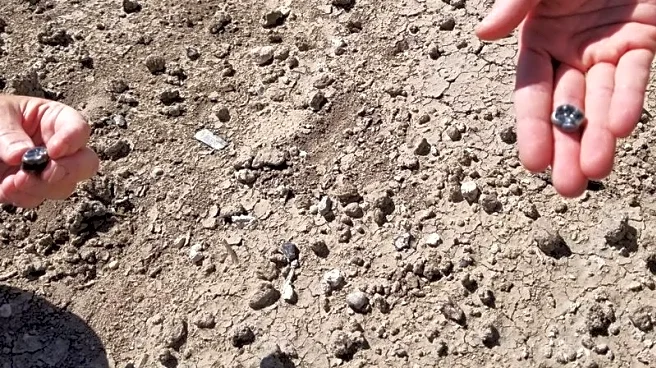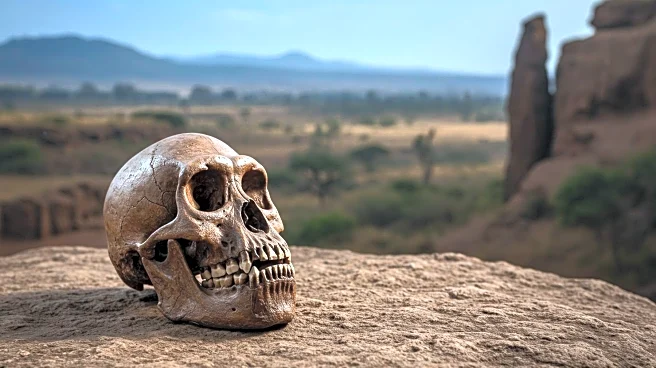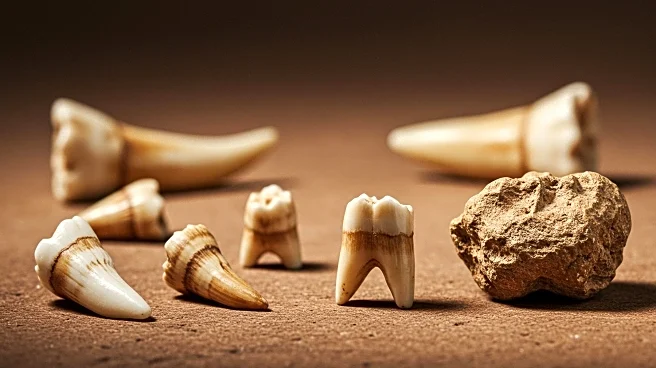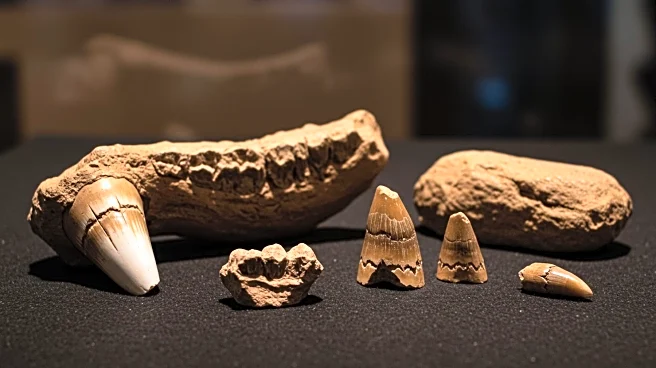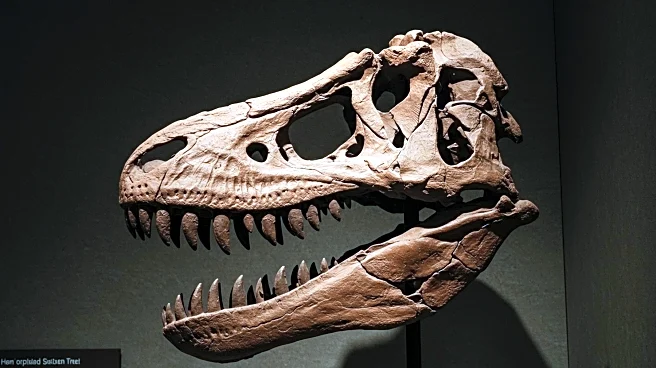What's Happening?
Researchers have uncovered thirteen hominin teeth in Ethiopia, dating back between 2.6 and 2.8 million years. These teeth were found in layers of volcanic ash and are believed to belong to both the Homo genus and a potentially new species of Australopithecus. The discovery suggests that these species may have coexisted, although the nature of their interaction remains unclear. The research team, led by Kaye Reed from Arizona State University, has been excavating in the Ledi-Geraru area, known for its significant volcanic deposits from this period. Previous findings in the region have included Australopithecus afarensis, famously associated with the Lucy fossil, and early Homo species. The identification of the teeth as belonging to a new Australopithecus species is based on their distinct characteristics compared to known australopithecines, although some experts, like John Hawks from the University of Wisconsin–Madison, caution that conclusions drawn from such limited evidence can be uncertain.
Why It's Important?
This discovery could reshape our understanding of human evolution, indicating a more complex evolutionary tree than previously thought. The coexistence of different hominin species in the same region raises questions about their interactions and resource sharing, which could provide insights into the social dynamics of early human ancestors. If confirmed, the existence of a new Australopithecus species would suggest that the evolutionary path leading to modern humans was more diverse, potentially influencing theories on adaptation and survival strategies. This finding also highlights the importance of continued archaeological exploration in regions like Ethiopia, which are rich in early human history.
What's Next?
Further analysis and excavation are needed to confirm the identification of the new species and understand its relationship with other hominins. Researchers may focus on finding additional fossil evidence to support the hypothesis of a new Australopithecus species. The scientific community will likely engage in debates and discussions regarding the implications of this discovery, potentially leading to revised models of human evolution. Continued exploration in the Ledi-Geraru area and similar sites may yield more discoveries that could further illuminate the complexities of early hominin life.
Beyond the Headlines
The discovery raises ethical considerations about the preservation and study of ancient human remains, as well as the cultural significance of such findings to local communities. It also prompts reflection on the broader narrative of human evolution and the interconnectedness of species, challenging simplistic views of linear progression. The potential identification of a new species underscores the dynamic nature of scientific inquiry and the evolving understanding of our origins.


